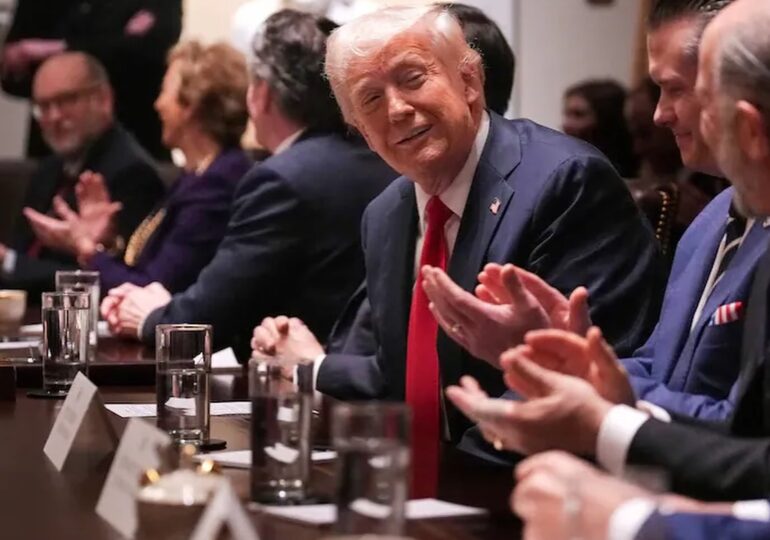After endless discussions about trade, the Trump administration needed a significant victory. It seems they have just achieved one.
For months, President Trump’s inclination to exaggerate the speed at which he can negotiate complex trade deals has been the target of jokes in Washington. „Now 90 days, Donald Trump promised the world that his tariffs would lead to 90 agreements in 90 days. By my calculations, he is missing about 88 trade deals,” said Senate Minority Leader Chuck Schumer, a Democrat from New York, earlier this month.
So, on Sunday, when Trump announced a trade deal with the European Union, it was not only the most significant trade deal to date, but also, politically, the one he needed the most, writes The New York Times.
After months without concluding any agreements, Trump is now coming off his most productive period of trade negotiations, having struck deals in recent days with the Philippines, Japan, and Indonesia, as well as with the European Union, the bloc representing 27 countries.
EU Yielded to Trump
The deal with the European Union seems to give Trump, at least at first glance, much of what he wanted.
"I am very surprised at how the European Union has yielded to Trump's demands. I thought the EU would be the most likely to retaliate. And yet, they did not. They actually gave in to most of Trump's wishes," said Douglas Irwin, an economics professor at Dartmouth College.
Although many details of the agreement are unclear, the European Union and the United States agreed on Sunday to a broad trade deal that establishes a 15% tariff on most goods from the EU, including cars, avoiding what could have become a painful trade war with a bloc that is the largest source of imports for the United States.
The European Union has also agreed to purchase $750 billion worth of American energy, a sum that Ursula von der Leyen, the EU executive president, said would be spread over three years, throughout most of the remaining duration of Trump's term, as she mentioned.
The bloc has also agreed to increase its investments in the United States by over $600 billion.
The two parties have also agreed to eliminate tariffs on a range of goods, including aircraft, aircraft parts, certain chemicals, certain generic medicines, semiconductor equipment, and some agricultural products, von der Leyen said.
She acknowledged that the tariffs could prove tough for some European companies, but defended the agreement in the context of the tariff increases Trump had threatened. "15 percent should not be underestimated, but it is all we could get," she said.
A Big Win for Trump
For Trump, it's a win on multiple fronts, the American daily appreciates, after most economists rejected the idea of his drastic tariffs, warning of serious consequences, including inflation and rising unemployment. And even though many criticized the wisdom of the American president's economic policies, his administration was criticized for its difficulties in negotiating agreements.
The deal with the European Union, the largest trading partner of the US, could ease some of the criticism. The agreement could also provide Trump with a way to divert the news cycle from how his administration handled the Epstein files, a controversy that has been haunting him for weeks.
At a press conference about the trade deal, a reporter asked Trump if he rushed the deal in an attempt to shift the focus away from Epstein. "You're kidding. It had nothing to do with that," he responded frustrated.
Trade negotiations are known for their complexity and time-consuming nature, so most analysts doubted that Trump could have much success in quickly concluding agreements. The Peterson Institute for International Economics stated in a 2016 analysis that negotiations for a single trade deal can take over a year, and their implementation can span several years.
That did not stop the White House from making bold predictions.
A few days after the April 2 announcement regarding tariffs imposed on countries worldwide, White House officials said that approximately 70 countries were already seeking agreements. Mr. Trump's trade adviser predicted 90 agreements in 90 days.
As the agreements proved more difficult to negotiate than announced, the American president lamented the pressure he was under. "Everyone says, 'When, when, when will you sign agreements?'" he said in May. And at one point, he even said, "There's no need to sign agreements."
Let's See the Text
The agreements announced in recent days mostly contain top-line figures. They are not the detailed and complex documents that the United States has negotiated over time, documents that can count hundreds of pages.
And the new deal with the European Union may still encounter problems. The Trump administration faces nearly a dozen lawsuits seeking to declare his tariffs illegal, on the grounds that the White House leader does not have the authority to impose them without Congress' approval. If these lawsuits succeed, Trump would be back in hot water.
Andrew Hale, a trade policy analyst for the conservative Heritage Foundation, warned against too broad an interpretation of the agreement with the European Union until the document is released and the lawsuits are resolved. "These are not comprehensive free trade agreements. Let's make that very clear. And a lot of this could evaporate," he said.
T.D.

